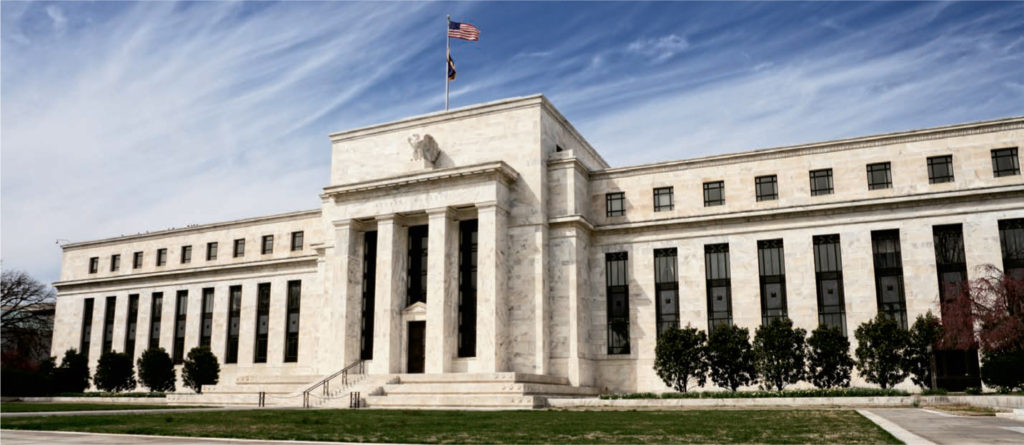Fed Beige Book: Slight to Moderate Economic Growth in Most Regions

Ten of the Federal Reserve Districts Reported a Growing Economy with Slight to Moderate Growth
Economic activity continued to expand in late January and February, with ten Districts reporting slight-to-moderate growth, and Philadelphia and St. Louis reporting flat economic conditions. About half of the Districts noted that the government shutdown had led to slower economic activity in some sectors including retail, auto sales, tourism, real estate, restaurants, manufacturing, and staffing services. Consumer spending activity was mixed across the country, with contacts from several Districts attributing lower retail and auto sales to harsh winter weather and to higher costs of credit. Manufacturing activity strengthened on balance, but numerous manufacturing contacts conveyed concerns about weakening global demand, higher costs due to tariffs, and ongoing trade policy uncertainty. Activity in the nonfinancial services sector increased at a modest-to-moderate pace in most Districts, driven in part by growth in the professional, scientific, and technical services sub-sector. Residential construction activity was steady or slightly higher across most of the U.S., but residential home sales were generally lower. Several real estate contacts noted that inventories had risen slightly but remained historically low, while home prices continued to appreciate but at a slightly slower pace. Agricultural conditions remained weak, and energy activity was mixed across Districts.

Federal Reserve Bank of Kansas City
Summary of Economic Activity
Tenth District economic activity expanded slightly in late January and February, and contacts expected additional gains in the months ahead. Consumer spending expanded slightly, led by modest gains in the auto and tourism sectors. Manufacturing activity also grew at a slight pace despite a decline in new orders for exports. Sales rose in the professional and high-tech, transportation, and wholesale trade sectors, and contacts expected additional gains moving forward. Commercial real estate activity continued to rise slightly, while residential real estate activity declined further. Conditions in the energy sector held steady since the previous survey period, and contacts were optimistic that OPEC production cuts and recent commodity price increases would boost overall activity in the coming months. Farm income continued to decline slightly, although farmland values remained relatively steady. Bankers reported a modest decline in loan demand, but loan quality, credit standards
Employment and Wages
Overall District employment and employee hours held steady in late January and February, and respondents projected slight gains in the months ahead. Contacts in the wholesale trade, real estate, health services, restaurant, and tourism sectors noted steady-to-modestly higher levels of employment, while those in the retail trade, auto sales, transportation, and professional and high-tech services noted a decline. Employee hours were mixed across sectors since the previous survey, but hours in all sectors were steady-to-modestly higher than year-ago levels.
A majority of respondents continued to report labor shortages for low- and medium-skill workers, including positions for truck drivers, all retail store positions, skilled technicians, and specialty-trade construction workers. A few contacts also noted shortages for high-skilled positions such as those in information technology, engineering, and finance. Wages continued to expand at a modest pace since the previous survey period and were strongly above year-ago levels. Additional modest wage gains were projected for the months ahead.
Prices
Contacts in a majority of sectors reported rising input and selling prices, with overall input prices up moderately and selling prices up modestly. In addition, contacts expected prices to increase further in the months ahead. Input prices in the retail sector grew at a strong pace since the last survey, while input prices in the restaurant sector rose modestly. Contacts in both sectors noted steady selling prices and expected growth of input prices to continue to outpace that of selling prices moving forward. Input prices in the construction supply sector fell since the previous survey period, while transportation respondents noted steady input prices. Both sectors reported moderately higher input prices over year-ago levels. Manufacturers reported a modest increase in the prices of finished products and raw materials, and both were projected to expand further in the coming months.
Consumer Spending
Consumer spending expanded slightly compared to the previous survey, and contacts expected modest gains in the months ahead. Retail sales increased slightly in late January and February and were moderately above year-ago levels. Respondents expected retail sales to increase modestly in the next few months. Auto sales grew modestly since the last survey period as well as compared to year-ago levels. SUVs and trucks sold well, while sedans sold poorly. Auto contacts expected strong increases in capital spending in the months ahead despite many contacts noting increases in the cost of credit. Restaurant sales rose slightly, and contacts expected sales to increase in the coming months. Tourism activity increased modestly compared to the previous survey period, and contacts anticipated slight sales increases in the months ahead.
Manufacturing and Other Business Activity
Manufacturing activity grew slightly since the previous survey period, and business contacts in wholesale trade, transportation, and professional and high-tech sectors also reported rising sales. Factory activity increased at both durable and nondurable goods plants, with faster growth at durable goods plants due primarily to increases in electrical equipment and appliances, and furniture manufacturing. Production, shipments, and new orders each ticked down compared to the previous survey period, but remained above year-ago levels. Contacts reported slightly lower new orders for exports compared to both the previous survey period and year-ago levels.
Outside of manufacturing, firms in the wholesale trade and professional and high-tech sectors experienced moderate growth in sales, while sales rose slightly at transportation firms compared to the previous survey period. In the coming months, wholesale trade, transportation, and professional and high-tech contacts anticipated moderate sales growth.
Real Estate and Construction
District real estate activity remained mixed as residential real estate activity declined modestly while commercial real estate activity rose slightly. However, contacts in both commercial and residential real estate projected gains in the months ahead. Residential home sales fell at a modest pace in late January and February, although they remained moderately above year-ago levels. Residential inventories held steady, and selling prices rose moderately. Residential home sales, inventories, and prices were expected to rise in the coming months. Sales of low- and medium-priced homes continued to outpace sales of higher-priced homes. Residential construction activity declined modestly including fewer housing starts, less potential buyer traffic, and lower construction supply sales. Respondents in the residential construction sector expected activity to rise in the months ahead. Commercial real estate activity continued to expand slightly as sales and absorption rose, and vacancy rates declined slightly. Commercial real estate contacts expected a similar pace of growth moving forward.
Banking
Bankers reported a modest decrease in overall loan demand including moderate decreases in the demand for commercial real estate loans, and slight-to-modest decreases in the demand for commercial and industrial loans, residential real estate loans, consumer installment, and agricultural loans. Loan quality remained unchanged compared to a year ago, but bankers expected a modest decline in loan quality over the next six months. Credit standards also remained largely unchanged in all major loan categories, and deposit levels were stable.
Agriculture
Farm income continued to decline slightly, but farmland values remained relatively stable in the Tenth District. Farm income decreased throughout the region in the last survey period according to District representatives, but modest increases in both crop and livestock prices could improve revenues for some farm operations moving forward. Demand for agricultural loans remained strong, and contacts reported a slight reduction in funding availability. Additionally, repayment rates on agricultural loans slowed modestly, and interest rates on farm loans increased slightly. Despite persistent weaknesses in farm finances and higher interest rates, farmland values remained relatively stable. However, a majority of contacts expected farmland values to decline moderately in 2019. However, District contacts indicated that demand for farmland remained high, and the volume of farmland sales compared to last year increased modestly in Nebraska and Kansas.
For more information about District economic conditions visit: www.KansasCityFed.org/Research/RegionalEconomy


